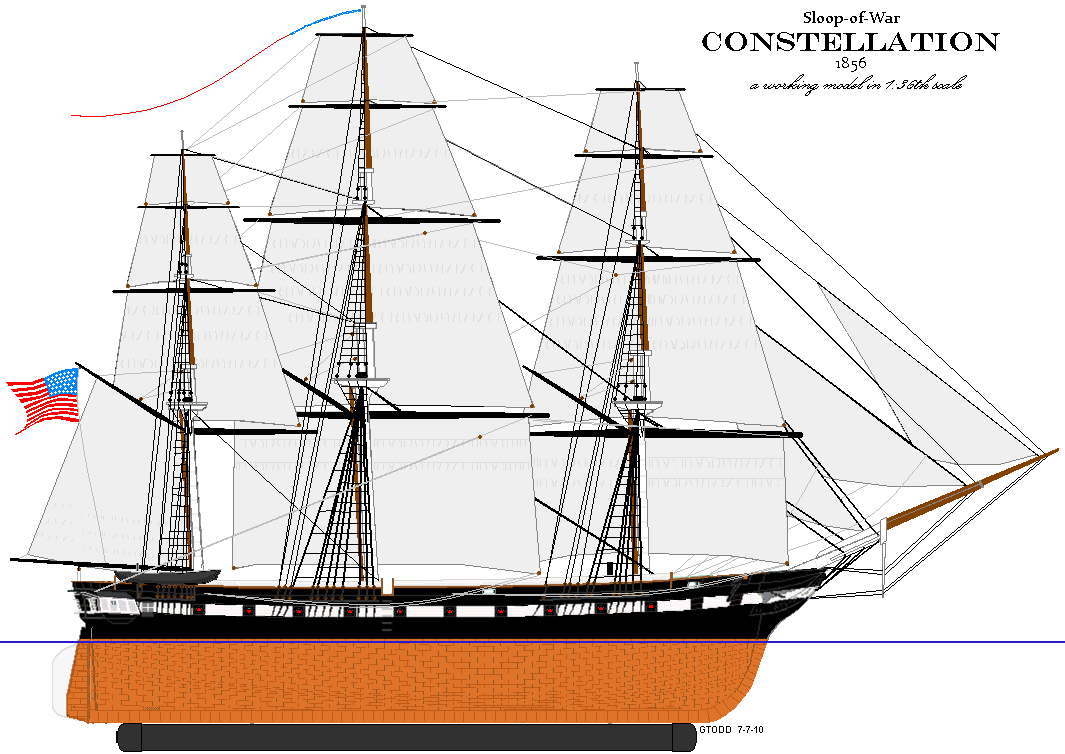I originally was going to use muslin for Constellation’s sails. Muslin looks like scale canvas in weight, texture, and color. The problem is it’s a natural fiber and with out door use wouldn’t last too long. Salt and UV would weaken it and it would tear very easily.
The SC&H company supplies sails for their large RC model kits made of Dupont Supplex nylon. Several people I know with these kits swear by this material that’s strong, light, UV resistant, and waterproof. It’s made for out-door apparel; wind breakers, winter wear, etc.
So, I got two yards of it for about $12 USD to make Constellation’s 2,807 square inches of sail area in 17 sails!
All the sails are rough cut and the panel seam marked on with a .03 permanent marker pen. Sewing these seams would cause crinkling and puckering along the stiches spoiling the scale appearance I want.
The headsails are hemmed, and the largest of these, the jib, and the mizzen topsail have bolt ropes sewn on. The mizzen topsail also has reef point strips and “tabling” glued on with Liquid Stitch. The glue is doing a great job after having the topsail through the washing machine several times with no signs of failing, and it’s saved a great deal of difficult sewing and all the associated puckering mentioned above.
Supplex, unlike muslin, is a synthetic and therefore melts when burned. This property is very handy when making holes for reef-points, jib hanks, bonnet lacing, and the like. A quick touch with the point of my soldering iron makes a nice hole that’s sealed and won’t tear. Still, any place such holes will go ought to be at least two cloth layers thick to prevent pulling the weave of the cloth.
When sewing on the bolt ropes I used nylon twisted lines in the diameter I wanted. I ran about 2 inches of glue along the edge of the sail and sewed to the end of it, then glued another 2 inches, etc. It’s sewn on with polyester thread. The boltrope is not attached to the edge of the sail, but to the “back side” of it along the edge. The needle is passed through the sail close to the edge and through the bolt-rope, around to the back of the sail, about 3/16" further along in this case, and back into the sail and the the rope so the diagonal leg of the stich lays in the strands of the bolt-rope. The pictures should show what I mean. This is, in fact, how a bolt-rope is sewn to a real sail, only with stitches that are closer together.
The sail is held at one end by a clamp-on vice. A line with a weight (I used a pair of scissors) at one end, and a clothespin at the other end is attached to the other end of the side of the sail being worked opposite the vice - to keep everything under some tension - this makes it much easier.
At 1:36 scale, the absence of bolt-ropes on the sails would have been quite obvious - especially to an old nit-piker like me.


